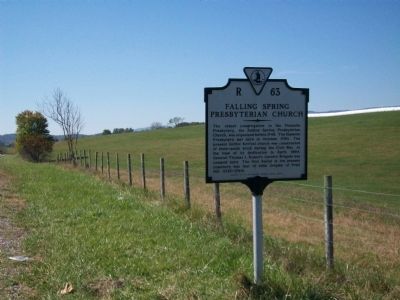
What we’re about
We will clean historic gravestones in and around Lexington, Virginia and Rockbridge County as a public service at no cost.
We use a cleaning product called D2, a non-toxic fungicide that is ph neutral and does no harm to the stones. D2 is the agent used to clean gravestones in US military cemeteries.
The D2 costs about $50 a gallon. While there is no fee for membership or participation in this group, we do need to raise money through donations to sustain our work.
personal check to:
James River Hikers
c/o Dennis Bussey
160 Kendal Drive, Cottage 1008
Lexington, VA 24450
This YouTube video describes the process we'll follow.
https://www.youtube.com/watch?v=7Oz3Ar2mM1s
Everything will be provided including gloves but you may want to bring your own. A step ladder will be helpful for taller stones if you have one.
This project will be led by Dennis Bussey who has performed similar Meetups over 55 times at Richmond Virginia's Shockoe Hill Cemetery.
The link below provides more information about the cemetery and includes this statement:
"Shockoe Hill Cemetery is the final resting place of many famous people. These include Revolutionary War hero Peter Francisco, Chief Justice John Marshall, and Union Spy Elizabeth Van Lew to name a few. Intermingled with them are the elite, the working class, and the poor."
https://shockoehillcemetery.org/our-residents/
Here is a representative example of one of those Meetups performed by James River Hikers - Hiking with History.
# Nov. 29, 2 pm: Restore Gravestones at Shockoe Hill Cemetery #42
https://4142298.xyz/james-river-hikers/events/288733570/
Upcoming events (4+)
See all- Dec. 18, 10 am: visit Falling Spring Presbyterian ChurchFalling Spring Presbyterian Church, Hot Springs, VA
A date to visit the cemetery and plan cleaning gravestones needs to be agreed to.
Church contacts include:
Wesley Shephard
Anne Herring
Mary Stoner 540-570-4162The oldest congregation in the Fincastle Presbytery, the Falling Spring Presbyterian Church, was organized before 1748. The Hanover Presbytery met here in October, 1780. The present Gothic Revival church was constructed of slave-made brick during the Civil War. At the time of its dedication in April, 1864, General Thomas L. Rosser's Cavalry Brigade was camped here. The first burial in the present cemetery was that of John Grigsby of Fruit Hill (1720-1794).
Named for a small waterfall that drops into Buffalo Creek, this Rockbridge County was organized in 1748 by Rev. Eliab Byram, a Harvard-educated minister from the Presbytery of New York. The first log building stood one-half

Photographed By Kathy Walker, October 19, 20092. Falling Spring Presbyterian Church MarkerLooking south on Route 11
mile from the present building. The second building, constructed of stone in 1793, had no heating stove, no bell, and brick aisles. In 1859 the trustees contracted with John B. Poague to build the present brick Gothic church about 100 yards west of the demolished 1793 structure. The dedication took place when Montgomery Presbytery met here in 1864. The congregation installed stained glass windows in 1940, renovated the sanctuary in the 1950s, and added an educational building in 1960.




